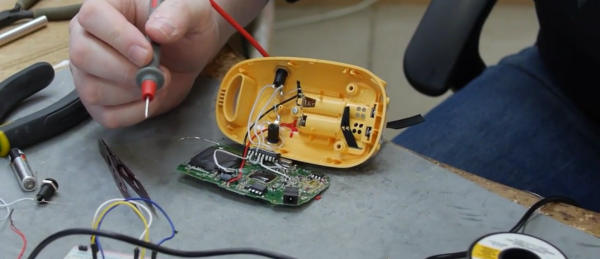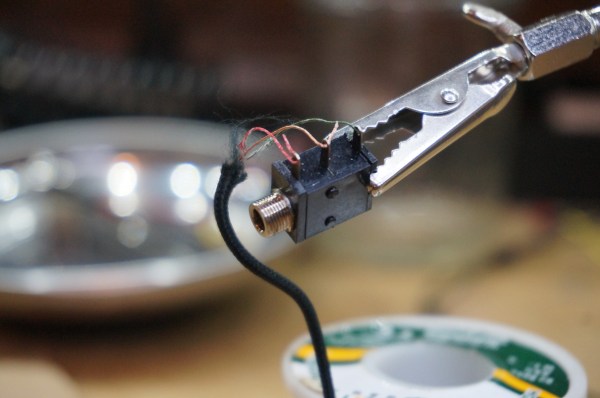You try to be good, but the temptation to drown out the noise of parenthood with some great tunes is just too much to resist. The music washes over you, bringing you back to simpler times. But alas, once you plug in the kids started running amok, and now the house is on fire and there’s the cleaning up to do and all that paperwork. Maybe you should have tried modifying a baby monitor to interrupt your music in case of emergency?
Starting with an off-the-shelf baby monitor, [Ben Heck] takes us through the design goals and does a quick teardown of the circuit. A simple audio switching circuit is breadboarded using an ADG436 dual SPDT chip to allow either the baby monitor audio or music fed from your favorite source through to the output. [Ben] wisely chose the path of least resistance to detecting baby noise by using the volume indicating LEDs on the monitor. A 555 one-shot trips for a few seconds when there’s enough noise, which switches the music off and lets you listen in on [Junior]. The nice touch is that all the added components fit nicely in the roomy case and are powered off the monitor’s supply.
Maybe you’d prefer listening to the nippers less than watching them? In that case, this impromptu eye-in-the-sky baby camera might be a better choice.
Continue reading “Modified Baby Monitor Interrupts Your Groove In Case Of Emergency”

















